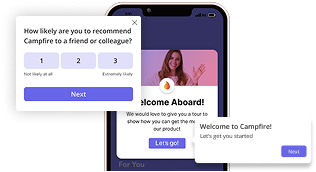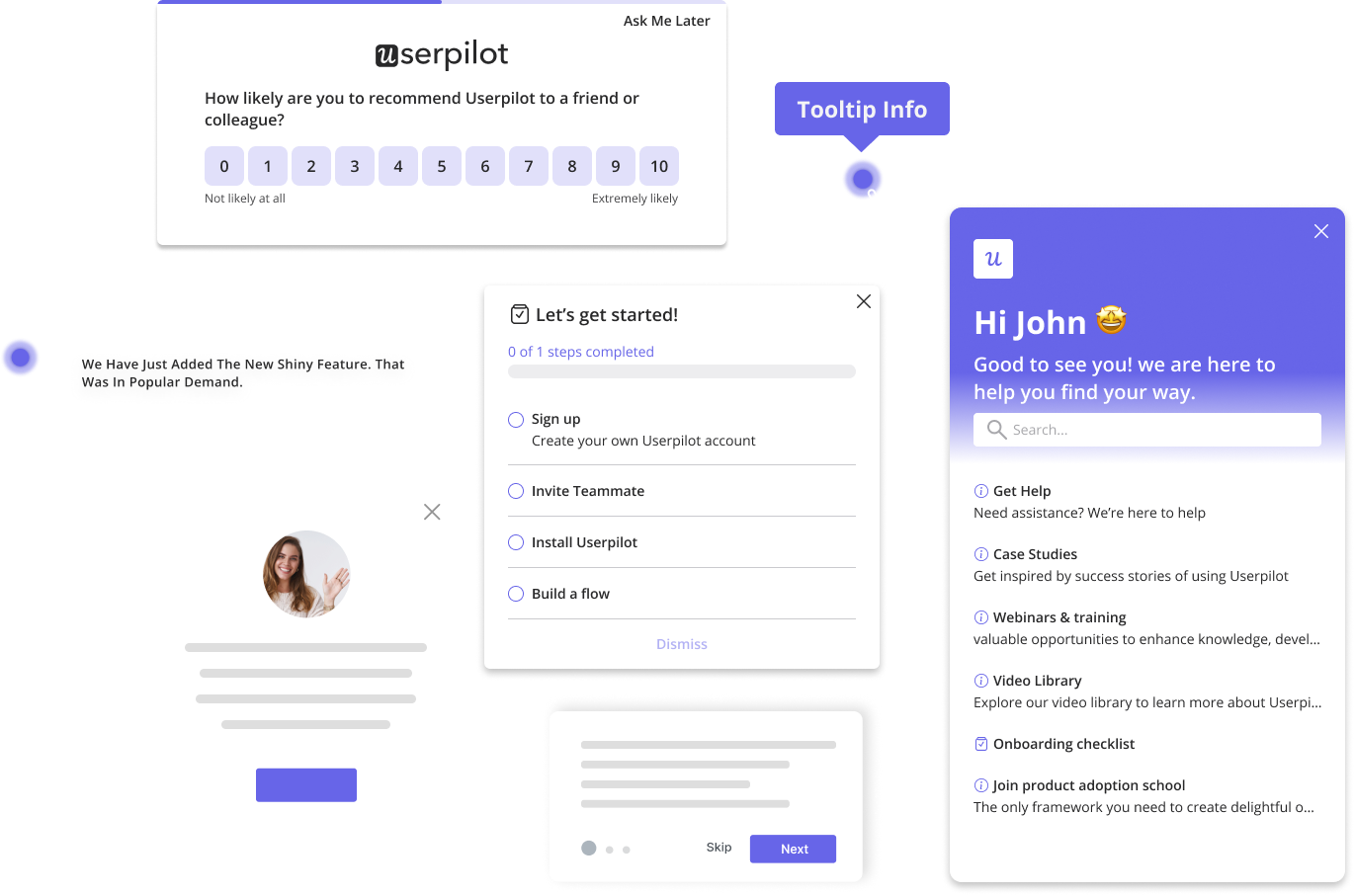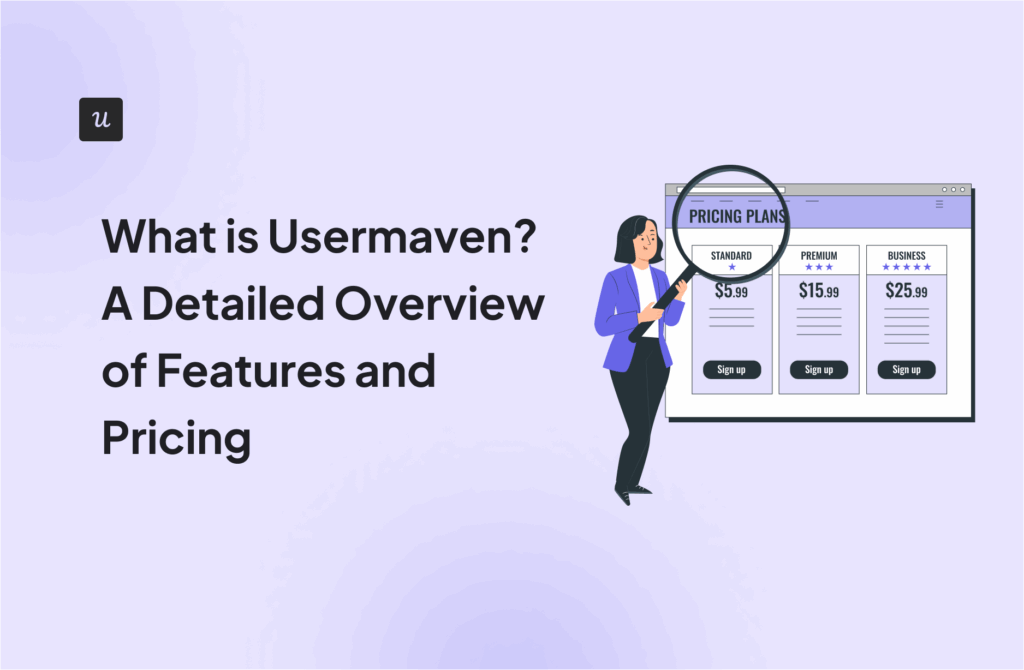
The SaaS AI race is on, forcing every product team to rethink their tech stack. While Pendo and the average Pendo alternative promise a single platform for the entire product experience, many growing SaaS teams say that vision has become a burden.
Behind the marketing, Pendo alternatives often deliver something else entirely: one of complex onboarding, opaque pricing, and a support team that’s hard to reach. In today’s reality, agility is everything. Tools that slow you down are no longer an option, especially when you need to leverage AI in SaaS.
As companies scramble to innovate, they’re realizing they don’t need bloated enterprise tools. The winners will be those who choose platforms that are easier to use, easier to trust, and built for the speed of AI. That’s why the product experience (PX) tool migration trend is moving from complex tools like Pendo to Userpilot.
In this blog, we’ll unpack:
- What’s driving product teams to leave complex tools like Pendo for Userpilot.
- How growing companies made the leap and what they gained.
- Why this migration isn’t just about cost, it’s about control and improving feature velocity.
What’s the biggest challenge you’re facing with your current product adoption tool?
How long does it typically take your team to launch a new in-app experience?
What is your primary goal with a Pendo migration or alternative?
You’re ready for a change.
Userpilot empowers teams to move faster with a powerful, code-free platform built for agility. See why hundreds of companies made the Pendo migration to Userpilot.
Try Userpilot Now
See Why 1,000+ Teams Choose Userpilot

When the “all-in-one” platform becomes a bottleneck
Enterprise tools like Pendo are designed for large, cross-functional organizations with in-house admins, deep budgets, and highly complex needs. They do a lot, but they also demand a lot in return, making them one of the more challenging product management tools to master.
For scaling SaaS teams, that tradeoff no longer makes sense.
Instead of helping teams move faster, these tools:
- Slow them down with long implementation times and steep learning curves.
- Tie them to engineering for basic changes to flows and onboarding.
- Charge premium pricing for features that go unused.
As the team at Shelterluv put it:
“We found Pendo too complex. We were only using a few features and couldn’t justify the cost anymore.”
It’s a classic case of feature bloat: they were paying for a heavyweight suite but only getting lightweight product value. That’s why many SaaS teams start searching for a Pendo alternative that’s lighter, faster, and easier to adopt.
Why teams leave for Pendo alternatives
For most growing product teams, the decision to migrate isn’t impulsive. Instead, it’s the result of mounting friction and a desire to improve product adoption.
Let’s break down the three most common reasons we see teams come to Userpilot:
- Complexity that slows everyone down
Tools like Pendo might be great for your team if you have a dedicated admin. But, let’s face it, most product teams don’t! Instead, they’re stuck navigating a fragmented UI, figuring out custom CSS, and waiting on devs just to push a tooltip live. That’s time and momentum lost while user experience is put on hold.
- Costs that don’t reflect value
With complex tools like Pendo and alternatives, custom pricing isn’t just high. Many clients who have migrated to Userpilot also share that it’s unpredictable. Add-ons stack up fast, and when teams realize they’re only using a handful of features, it’s hard to justify the SaaS valuation. By contrast, Userpilot customers know exactly what they’re paying for — and why, which helps them calculate software ROI.
- Engineering dependence that kills agility
Product-led growth only works if your product team can move fast.
But when you’re locked into a tool that requires technical setup, manual tagging, and dev time just to get data flowing, flexibility and efficiency are lost. A/B testing becomes a major project instead of a quick experiment.
These aren’t minor inconveniences. They’re strategic blockers.
And for teams chasing faster iteration and growth experimentation, they’re dealbreakers.
“Userpilot’s powerful segmentation and ease-of-use allowed Cuvama to deliver highly personalized and impactful experiences quickly.”
Why teams are flocking to Userpilot
Whether teams leave Pendo or other Pendo alternatives, they’re not just looking to save money. They’re looking to move faster with a tool that supports how they actually work, focusing on a strong user adoption strategy.
Here’s what teams say changed when they migrated to Userpilot.
Less training, more building
One of the most significant burdens of a complex platform is the endless training required to get the team up to speed.
Here’s how Bouwe Metz, a Senior Customer Success Manager, described achieving a 99% reduction in 1:1 customer training hours after moving to Userpilot:
“We do live training two times a month, for 2 hours. So down to 4 hours. And before, we had two colleagues doing many trainings a day.”
With Userpilot, teams spend less time in training and more time building impactful user experiences. The platform’s intuitive nature puts control back in the hands of product and growth teams, where it belongs.
Launch in minutes, not sprints
With Userpilot, product managers, marketers, and CX teams can build flows, checklists, surveys, and tooltips without writing a single line of code or relying on developers.
That means:
- Faster launches.
- More product experiments.
- No more waiting on engineering.
It’s a stark contrast to what our customers experience with Pendo alternatives:
“Feedback the team had was, ‘we don’t know how to use it or have the time to sit and read through everything to figure it out.” — Matthew Brown, Senior Customer Solutions Manager, Shelterluv
Userpilot flips that experience and puts control back in the hands of product and growth teams.
Analytics that drive action
In the fast-paced world of product design, staying ahead of friction is key.
For Cleeng, a leading D2C subscription management platform, Userpilot’s session replays and real-time data insights allowed them to react swiftly and intelligently when a minor update resulted in a staggering 92% drop in feature usage.
Instead of letting this crisis turn into churn, Anna Sobiak, Product Designer at Cleeng, turned to Userpilot. With real-time analytics and in-app guidance at their fingertips, her team quickly identified the issue and took action. The result?
A 75% recovery in usage within days!
Anna explains the key to their success:
“Session replays were super useful when we changed the navigation. We could see exactly what the users were clicking and if they were visiting the pages we wanted them to visit.”
Predictable pricing built for scale
No add-on traps. No hidden fees. No chasing down quotes.
Userpilot’s pricing is transparent, tiered, and built to grow with you. Whether you’re a team launching your first flows or managing multiple applications and tokens, our pricing plans are designed to scale as you evolve.
For many teams, price shocks and hidden fees are a real pain point. This is exactly why hundreds of teams turn to Userpilot. After discounts expire, clients report their costs nearly doubled without any increase in value, all while they were using just a small slice of the platform.
With Cuvama, a value-selling platform, the issue was the mismatch between cost and usage:
“High price was one of the decision criteria to move from Pendo because we were paying lots, and we were not using it.” — Leyre Iniguez, Customer Experience Lead at Cuvama
Every Userpilot plan includes core functionality—you’ll never be asked to upgrade just to access surveys or flow analytics. What you see is what you get—and what you get is what you actually use.
When teams switch to Userpilot, they’re not just cutting spend; they’re choosing a platform where value aligns with usage, not just with ambition.
A support team that actually supports you
With Userpilot, you don’t just get tools, you get a partner.
Clients consistently highlight how Userpilot’s customer support moved them from frustration to progress.
As Shelterluv’s Senior Customer Solutions Manager, Matthew Brown, shared:
“Userpilot’s support agent was super responsive to any of the questions that our product manager had and gave her the resources in a way that was easy for her to share with the rest of the team.”
That level of responsiveness isn’t a bonus. For many teams, it’s critical.
Real support means:
- Getting actionable help fast.
- Gaining internal awareness.
- Turning setup challenges into wins.
- Expanding usage beyond a single product team.
Real-world proof: Teams that chose Userpilot over other platforms — and won
The proof of choosing a Pendo alternative like Userpilot’s isn’t just in what we say—it’s in the results our clients achieve. While other platforms created complexity, costs, and friction, our clients leveraged Userpilot to gain the agility they needed. Let’s take a look at how companies like Unolo, Impala, Beable, and Amplemarket chose Userpilot and won.
Unolo: Proactive feedback to reduce churn from 3% to 1%
Problem: Unolo, a SaaS platform, was facing high churn due to lack of real-time feedback from users. As a result, they were unable to act on churn signals quickly.
Solution: They implemented Userpilot’s NPS surveys and in-app feedback tools to proactively gather actionable insights directly from users.
The Userpilot Advantage: This data-driven approach enabled Unolo to address user pain points before they escalated, successfully reducing churn by up to 1%.
“We can quickly gauge user satisfaction and fix issues before they escalate into churn. The data-driven approach with Userpilot allows us to stay ahead of potential problems.” — Unolo Product Team
Impala: Boosting user activation by 100%**
Problem: Impala, a travel tech platform, struggled with getting users to activate and engage with key features due to the complexity of their previous tools.
Solution: By switching to Userpilot, they could easily track user behavior and trigger engagement flows.
Outcome: Impala’s simple setup and actionable analytics allowed them to increase user activation by an impressive 100% within just a few months.
“Userpilot’s insights and real-time tracking helped us identify the gaps in our onboarding flows and take quick action to increase activation.” — Product Manager at Impala
Beable: Increased EdTech engagement by 76%
Problem: Beable, an edtech company, needed to increase user engagement and adoption with minimal overhead.
Solution: They used Userpilot to set up interactive checklists and in-app surveys, allowing users to explore key features on their own.
Outcome: Beable saw a 76% increase in app engagement, as users became more self-sufficient, leading to higher adoption rates and fewer support tickets.
“Userpilot’s easy-to-implement checklists helped our users explore features at their own pace, leading to better engagement and fewer support tickets.” — Beable Customer Success Manager
Amplemarket: 10× Feature adoption and faster event tracking
Problem: Amplemarket’s fragmented analytics and engagement tools caused slow event tracking, limited customization, and reliance on engineering.
Solution: They implemented Userpilot as an all-in-one, no-code platform, enabling non-technical teams to launch in-app experiences and track events in days instead of weeks.
Outcome: Amplemarket saw a 5–10× boost in feature adoption, reduced event tracking time from weeks to minutes, and improved collaboration across product teams.
“Whenever I add a nudge to a new feature, it boosts adoption by 5x, even 10x.” — Awni Shamah, Staff Product Manager at Amplemarket
Is it time for your team to change course?
These case studies all point to a recurring theme: companies are making a strategic move to find a Pendo alternative that solves real-world problems. But what does this mean for your team? The question isn’t whether your current PX tool is powerful enough; it’s whether it’s the right fit for the way you work.
If your current PX tool feels more like a blocker than a boost.
If you’re paying for features you don’t use.
If your team’s momentum is slowed by complexity, cost, or support gaps.
Remember: you’re not alone. And you’re not stuck.
More teams are migrating from Pendo and other complex PX tools to Userpilot because they’re choosing:
- Agility over admin time.
- Real-time insight over rigid dashboards.
- Team empowerment over engineering dependence.
And they’re seeing the results in faster product launches, better adoption, and lower support volume.
Make your move
We’ve helped hundreds of companies migrate from complex PX tools and find the right Pendo alternative this year, including contract buyouts for qualified accounts. Let’s talk about what switching could look like for you.
Book a demo today!






